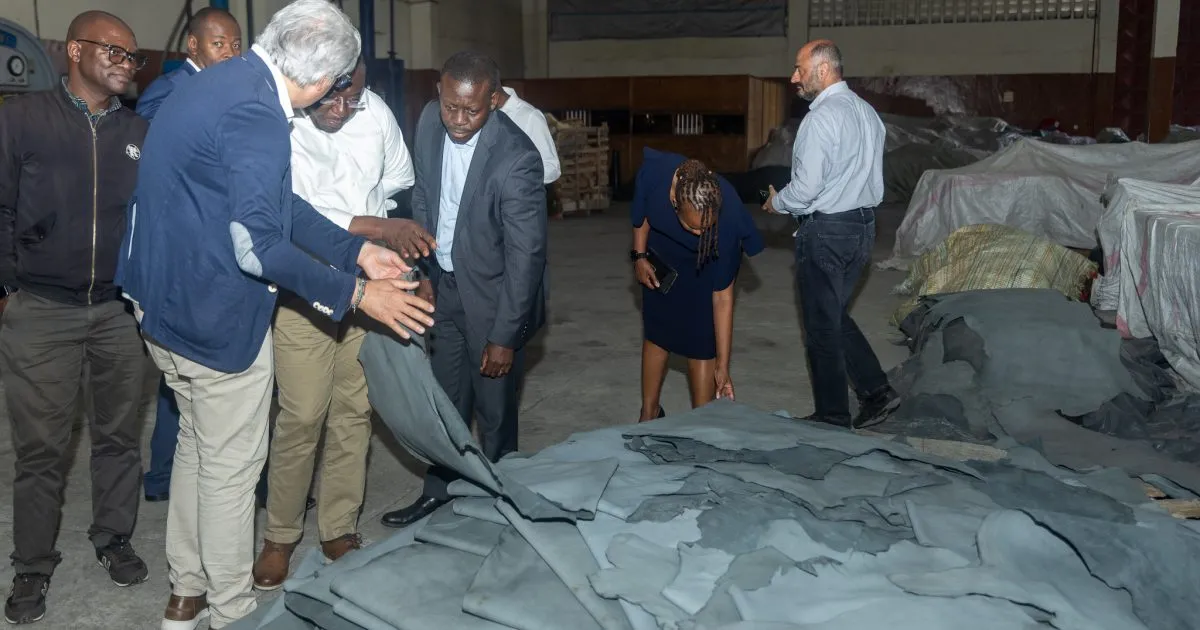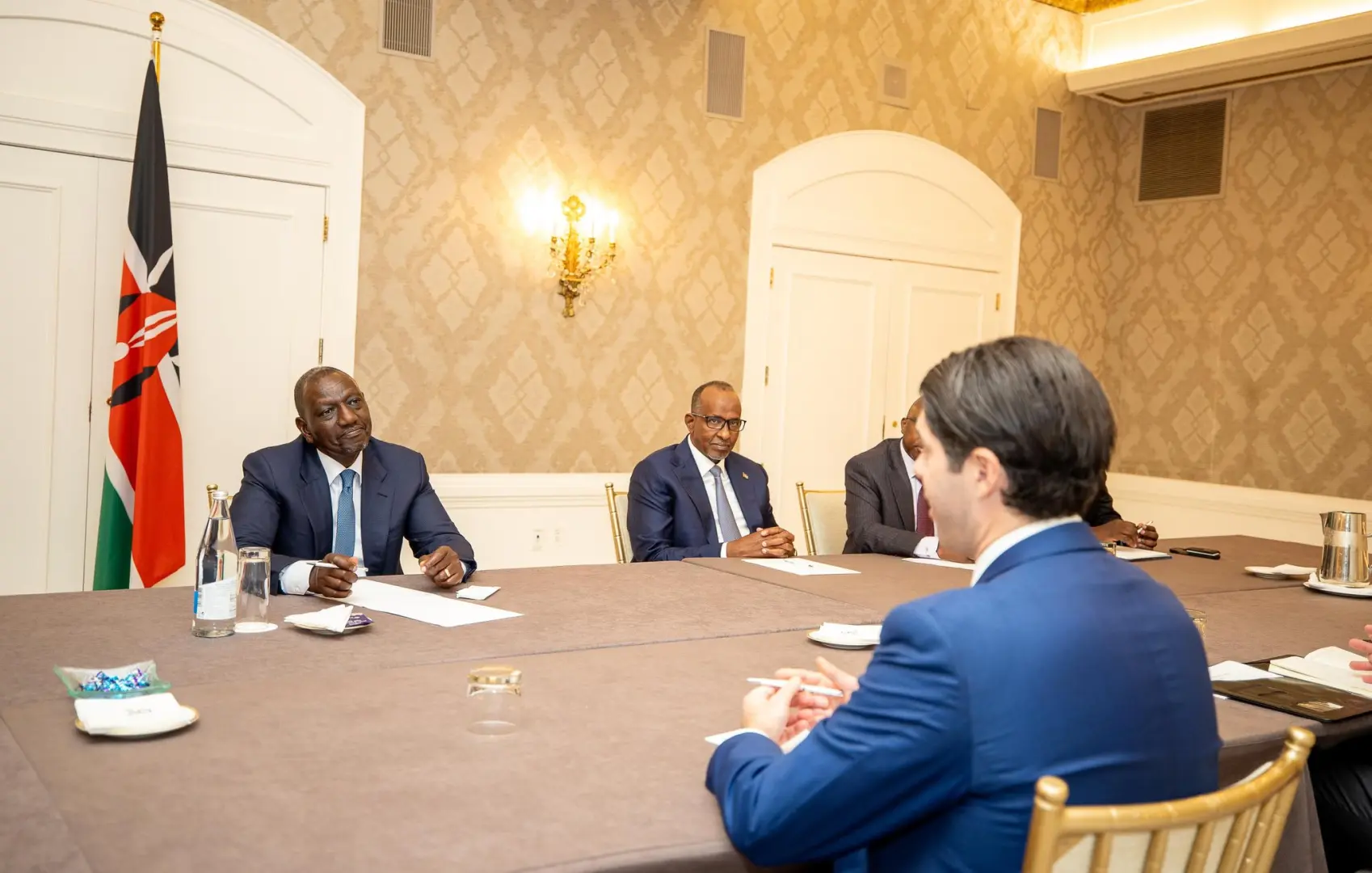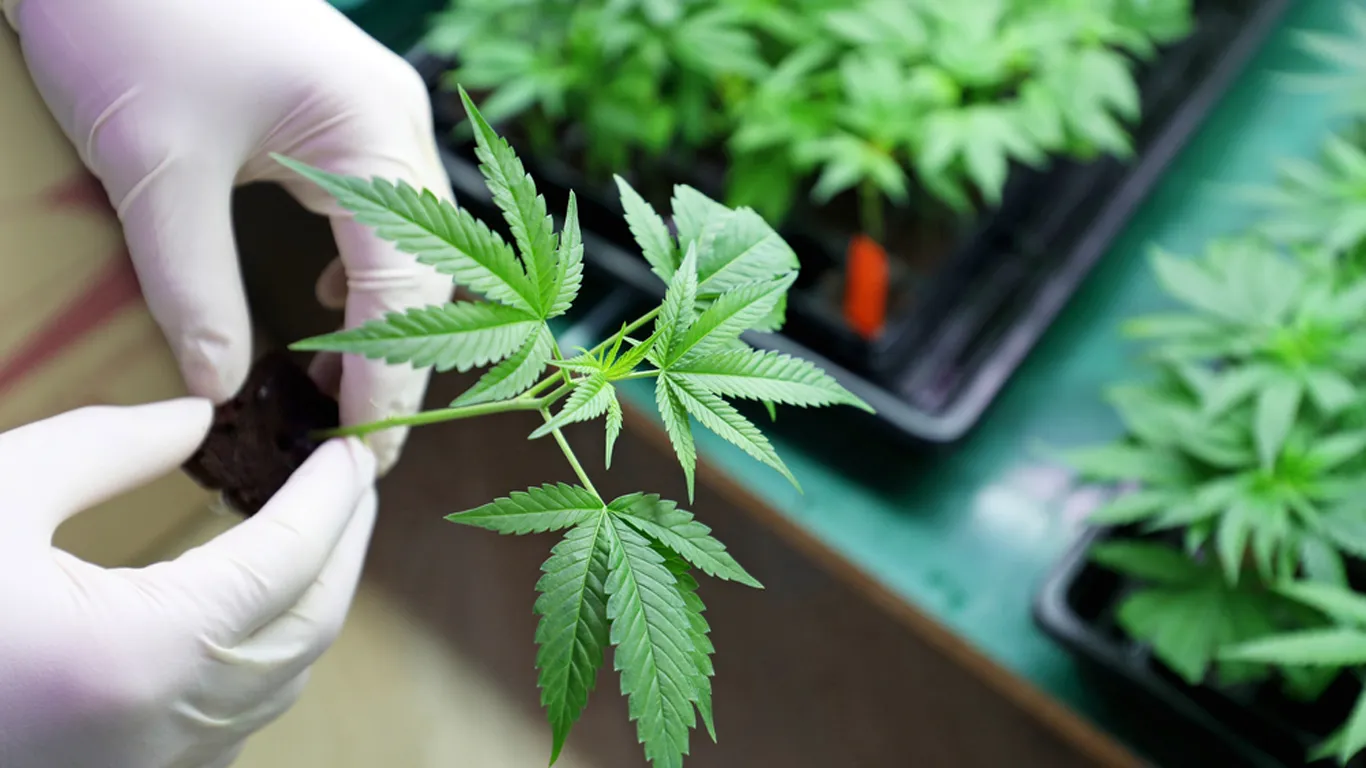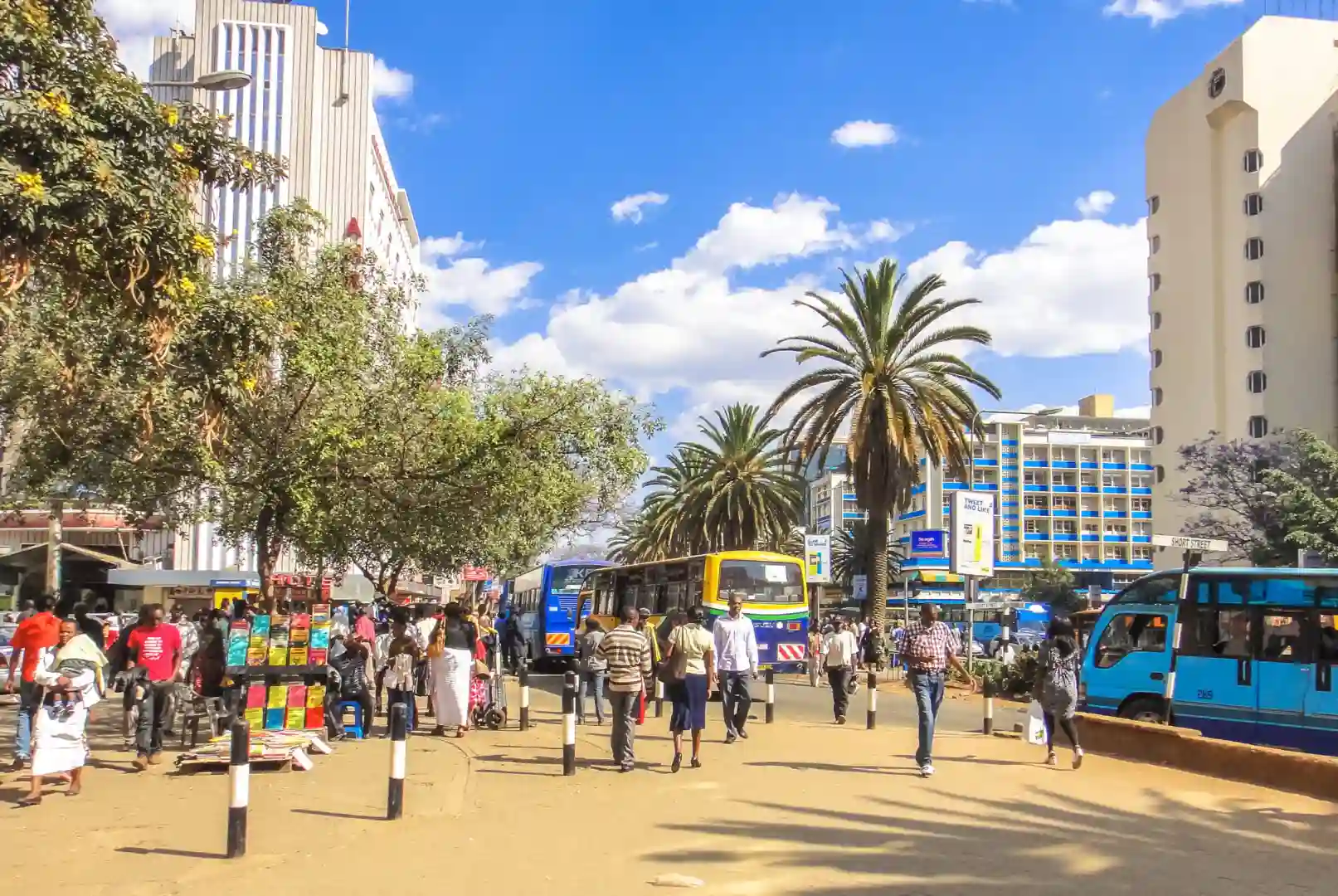In a significant boost for economic development and job creation across East and Central Africa, Italy has formally committed to spearheading the revival and expansion of Kenya’s vibrant but underexploited leather and tanning industry. This landmark partnership, solidified with Equity Group Holdings as the strategic financial catalyst, promises to unlock immense potential, transforming raw hides and skins into high-value global products and positioning Kenya as a regional leather powerhouse. The collaborative initiative underscores a deepening bond between Rome and Nairobi, leveraging Italy’s world-renowned expertise in leather craftsmanship and technology with Kenya’s abundant livestock resources.
The announcement was met with enthusiastic endorsement from key Kenyan government bodies, with both the Ministry of Agriculture & Livestock Development and the Ministry of Investment, Trade & Industry (MITI) extending their full support. Principal Secretary (PS) for Livestock Development, Jonathan Mueke, a vocal champion for the sector, unequivocally reaffirmed the government’s unwavering commitment to fostering the comprehensive development of the entire leather value chain.
Speaking on PS Mueke’s behalf, Dr. Isaack Noor, Chief Executive Officer (CEO) of the Kenya Leather Development Council (KLDC), emphasized that Kenyan authorities and policymakers are not just passively welcoming this investment but are actively “at the forefront of championing an enabling environment to support large-scale investment in the leather sector.” This proactive stance signals a significant shift towards creating a predictable and supportive ecosystem for both local and foreign investors, crucial for the long-term success of such ambitious undertakings.
Government’s Strategic Vision: Nurturing the Leather Ecosystem
The Kenyan government’s commitment to the leather industry is multifaceted, addressing critical bottlenecks from raw material quality to market access. PS Mueke outlined several strategic initiatives crucial for elevating the sector:
- Increasing the Supply of Quality Hides and Skins: This is foundational. The quality of the final leather product is directly dependent on the initial quality of the hides and skins. The government plans to achieve this by “training slaughterhouse staff” on proper flaying, handling, and preservation techniques. Improper flaying often leads to cuts and defects that downgrade the value of the hide. Improved handling reduces damage from insects, disease, and poor storage, which currently contribute to significant wastage.
- Developing Necessary Infrastructure: A key component is the establishment and enhancement of industrial parks. The PS specifically highlighted the Kenanie Leather Industrial Park in Machakos County. Such parks are designed to “facilitate aggregation for smallholder farmers” by providing centralized facilities for collection, initial processing (like salting and drying), and storage. These industrial hubs offer shared services, specialized infrastructure, and a conducive environment for tanneries and leather product manufacturers to co-locate, benefiting from economies of scale and reduced logistical costs. They also aim to minimize environmental impact through centralized waste management.
- Negotiating Global Agreements: To ensure market access for Kenyan leather products on the international stage, the government is actively engaging in “negotiating global agreements.” This could involve preferential trade agreements, bilateral investment treaties, and collaborations with international bodies to reduce trade barriers and open up new export opportunities for processed leather and finished goods.
- Supporting Skills Development: A skilled workforce is paramount for a sophisticated industry. The initiative includes robust programs for “skills development” across the entire value chain, from animal husbandry and flaying to tanning, finishing, and the design and manufacturing of leather products. This not only enhances product quality but also creates high-value employment opportunities for Kenyan youth, aligning with the broader national agenda of job creation and youth empowerment.
Reassuring foreign investors, PS Mueke highlighted Kenya’s robust legal framework designed to safeguard foreign investments. He specifically cited the Foreign Investment Protection Act, the Investment Promotion Act, and the Investment Dispute Convention Act. These acts provide legal guarantees against expropriation without adequate compensation, facilitate investment approvals, and offer mechanisms for resolving investment disputes, thus building confidence among international partners and mitigating perceived risks. This legal assurance is a cornerstone for attracting the significant capital and technology transfer required for industrial transformation.
Italy’s Commitment: A Deep Dive into Expertise and Collaboration
The Italian commitment is driven by a delegation of leather industry experts and players, led by Italian Ambassador to Kenya, Roberto Natali. Speaking during the stakeholder meeting at the Equity Centre in Nairobi, Ambassador Natali underscored that this agreement “marks a significant step in strengthening the relationship between Kenya and Italy, as well as strengthening the leather industry ties between the two countries.” This partnership transcends mere trade; it’s about forging a lasting economic and technological alliance.
Ambassador Natali highlighted the profound readiness of the Italian delegation to actively engage. “A delegation of leather industry experts and players from Italy is here with me, ready to explore ways to build capacity, establish more tanneries and help develop and maintain an efficient leather supply chain in East and Central Africa,” he stated. This “building capacity” is critical, referring to enhancing local skills, improving operational efficiencies, and upgrading technological capabilities within Kenyan tanneries and manufacturing units. The emphasis on “more tanneries” suggests a direct intent to increase the processing capacity, which is vital for handling the vast volume of raw materials.
A primary driver for this collaboration is to address the shocking statistic that “over five million skins of animals that go to waste yearly in Kenya.” This immense wastage represents a substantial economic loss and an environmental concern. Italy’s willingness to “share knowledge, best practices, and exchange technology with the industry players in the country” is precisely what is needed to transform this waste into valuable resources. This technology transfer will cover modern de-hairing, tanning, and finishing processes that are more efficient, environmentally friendly, and yield higher quality leather.
Furthermore, the Ambassador declared that “Kenya, with its abundant livestock and growing industrial base, is uniquely positioned to become a regional hub for leather processing and production of related products.” This vision aligns perfectly with Kenya’s aspirations to become a manufacturing and export leader in East Africa. The country’s strategic geographical location, coupled with its robust transport infrastructure and access to regional markets, makes it an ideal center for a thriving leather industry.
Ambassador Natali also provided reassurance regarding the human capital aspect: “We will support players in the industry, especially now that the authorities continue to emphasize the priority of leather as a key value chain through which youth can get jobs.” This direct link to youth employment underscores the socio-economic benefits of the partnership. The week-long knowledge exchange tour, including field visits to local smallholder livestock farmers, slaughterhouses, leather processors, and related product manufacturers, was designed to provide the Italian delegates with a granular understanding of the local landscape, challenges, and opportunities. This immersive approach ensures that the Italian assistance is tailored to local realities.
The Powerhouses Behind Italian Leather Excellence
The Italian delegation represents the pinnacle of the global leather industry, bringing specialized expertise vital for Kenya’s development. Key entities present included:
- UNPAC (National Association of Italian Leather Chemicals Manufacturers): This association represents manufacturers of chemicals essential for de-hairing, tanning, and finishing processes. Their involvement is crucial for transferring knowledge on advanced, environmentally compliant, and efficient chemical formulations that produce high-quality leather. They can guide Kenyan tanneries on sustainable chemical use and waste management.
- UNIC (Italian Tanners’ Association): As the leading representative body for Italian tanneries, UNIC embodies centuries of tanning heritage combined with modern innovation. Their expertise covers all aspects of leather production, from raw hide processing to the creation of various leather types (e.g., shoe leather, upholstery leather, garment leather). They can provide invaluable guidance on best practices, quality control, and efficient production lines.
- ICEC (Institute of Quality Certification for the Italian Leather Sector): This institute is responsible for quality certification in the Italian leather industry, ensuring adherence to stringent standards. Their involvement is critical for establishing robust quality control mechanisms in Kenya, allowing Kenyan leather products to meet international benchmarks and gain acceptance in discerning global markets. They can help set up certification processes, laboratory testing, and quality assurance protocols.
- ASSOMAC (National Association of Italian Manufacturers of Footwear, Leather Goods and Tanning Machinery): Represented by its General Director Agostino Apolito, ASSOMAC is pivotal for technology transfer. They manufacture the sophisticated machinery used in modern footwear, leather goods, and tanning production. Their involvement means Kenya can access cutting-edge equipment for efficient and high-quality processing, from automated flaying tools to advanced tanning drums and finishing machines. Apolito’s emphasis on supporting farmers and traders through “skills and technology transfer and enhanced European market access” directly addresses the needs of grassroots players. This implies not just selling machines but also providing training on their operation and maintenance.
These organizations collectively represent the entire spectrum of the Italian leather ecosystem – from chemicals and tanning processes to quality assurance and machinery. Their collaborative presence in Kenya signifies a holistic approach to industry revival, aiming to build a sustainable and competitive leather value chain from the ground up.
Equity’s Strategic Financial Partnership: Fueling the “Africa Recovery and Resilience Plan”
Equity Group Holdings, a leading financial institution on the continent, has positioned itself as the pivotal “reliable and responsive financial partner” in this transformative initiative. Brent Malahay, Equity Group’s Chief Strategy Officer, articulated the financial institution’s ambitious plan to “catalyze the continent’s huge potential through the Africa Recovery and Resilience Plan (ARRP).”
The ARRP is Equity’s flagship initiative designed to stimulate post-pandemic economic recovery and build long-term resilience across Africa. It involves mobilizing significant capital to support strategic sectors that have high growth potential and can drive broad-based economic transformation. Malahay insisted that Kenya presents “significant growth potential across 12 key sectors,” with leather products identified as a “major subsector within the broader livestock sector.” This highlights the deliberate and strategic choice of leather as an early focus area for ARRP investment in Kenya.
Illustrating Equity’s diverse investment focus, Malahay noted that “sectors like transport and energy have also been prioritized for investment.” This contextualizes the leather initiative within a broader national development strategy, recognizing that a thriving leather industry requires supportive infrastructure and a stable energy supply. He emphasized Kenya’s “competitive advantage,” which positions the country to “soon become a regional or even global hub in the leather sector.” This competitive edge stems from its large livestock base, strategic location, and increasingly conducive business environment. Malahay further reinforced Equity’s deep involvement, stating that the country already has “a robust value chain involving thousands of businesses supported and insured by Equity,” indicating a pre-existing commitment and infrastructure for growth.
Presenting Equity’s value proposition, Malahay highlighted the institution’s readiness to support expansion partnerships with investors. He provided compelling statistics: Kenya currently has “13 major registered tanneries, with an estimated annual installed capacity of 31,440 tonnes of hides and 15.6 tonnes of skins, as well as 49 large slaughterhouses, 322 medium slaughterhouses, and 1,735 slaughter slabs.” These figures reveal a significant existing capacity and a vast network of raw material suppliers, albeit one that requires modernization and improved efficiency to meet international standards and capture higher value. Equity’s role will be crucial in providing the necessary financing for these existing players to upgrade, expand, and adopt new technologies, as well as for new entrants into the sector. This holistic financial support, from working capital to long-term investment, is key to turning potential into tangible growth.
Unlocking Kenya’s Leather Value Chain Potential: From Waste to Wealth
The focus on Kenya’s leather industry is driven by its enormous, yet largely untapped, potential. While Kenya boasts one of Africa’s largest livestock populations, the industry has historically struggled with inefficient processing and significant wastage.
The statistic of “over five million skins of animals that go to waste yearly” is a stark reminder of the missed opportunities. This wastage occurs primarily due to poor flaying techniques at slaughterhouses, inadequate preservation methods (leading to putrefaction or insect damage), and limited processing capacity to handle the sheer volume of hides and skins produced. These discarded raw materials could otherwise be transformed into valuable leather, generating substantial revenue and creating jobs.
Italy’s expertise, combined with Equity’s financial backing, directly targets this problem. The partnership aims to:
- Improve Raw Material Quality and Collection: By training slaughterhouse staff and developing aggregation centers, the initiative seeks to dramatically reduce waste and improve the initial quality of hides and skins. This step is fundamental, as even the most advanced tanning processes cannot fully compensate for damaged raw materials.
- Enhance Tanning and Processing Capacity: With 13 major registered tanneries and a significant installed capacity, Kenya has a base to build upon. However, many tanneries may require upgrades in machinery, chemical processes, and environmental compliance. The Italian partners, through ASSOMAC and UNPAC, can provide the technology and chemical know-how to enhance efficiency, reduce pollution, and produce diverse types of high-quality leather.
- Foster Value Addition and Product Diversification: Currently, a significant portion of Kenyan hides and skins is either wasted or exported as semi-processed “wet blue” leather, capturing minimal value. The goal is to move up the value chain by manufacturing finished leather products such as shoes, bags, garments, and upholstery. This requires investment in design, finishing, and manufacturing capabilities, which Italian design and craftsmanship expertise can significantly enhance.
- Benefit Smallholder Farmers: The livestock sector is a major source of livelihood for millions of smallholder farmers in Kenya. By improving the value of hides and skins and ensuring a consistent market, the initiative will directly benefit these farmers, providing them with additional income streams and incentivizing better animal husbandry practices. The “aggregation for smallholder farmers” facilitated by industrial parks will ensure their produce can reach the processors efficiently.
- Create Mass Employment: The leather industry is labor-intensive, offering significant potential for job creation, particularly for youth. These jobs span various segments: animal husbandry, slaughterhouse operations, hide collection and preservation, tannery operations, leather product design and manufacturing, marketing, and logistics. A thriving leather sector can absorb a substantial portion of the burgeoning youth population, providing dignified livelihoods and reducing unemployment.
Success Stories and Future Prospects: A Collaborative Blueprint
The vision for Kenya’s leather industry is not merely theoretical; it builds on existing successes and collaborative frameworks. Sambasiva Rao Pamidimukkala, Managing Director (MD) of Alpharama Tannery in Athi River, provided a compelling real-world example. He illustrated how Alpharama Tannery has become a regional leader in the procurement and processing of hides and skins across East Africa, successfully making inroads into the global leather market, notably “in partnership with Equity.” This success story serves as a testament to the viability of the model and Equity’s role as a supportive financial partner. “We continue to support farmers and help them maintain quality of skins and hides, even as we eye expansion across the region,” said Pamidimukkala, signaling the ongoing commitment of local industry players to growth and quality.
This knowledge exchange visit is a continuation of strategic engagements, building on an initial stakeholder meeting four months prior. It also directly follows a crucial cooperation agreement between Equity and the Kenya Investment Authority (KenInvest) under the Ministry of Investments, Trade and Industry (MITI). The Equity/KenInvest partnership is explicitly “keen on revitalizing Kenya’s investment landscape,” with a special focus on key sectors, starting with the leather industry. This indicates a coordinated national effort to attract and facilitate investment, leveraging both financial muscle (Equity) and investment promotion expertise (KenInvest).
Through these comprehensive partnerships – government support, Italian technical expertise, and Equity’s financial backing – the initiative is poised to be a powerful engine for socio-economic transformation. Equity is reinforcing its role as a “key driver of socio-economic transformation in Kenya’s leather industry,” contributing to the creation of a sector that is not only “more competitive” on the global stage but also “sustainable” in its practices and “globally recognized” for its quality and innovation. The goal is to move beyond mere raw material export and establish Kenya as a significant player in the high-value global leather products market.
This collaboration serves as a powerful blueprint for other African nations seeking to unlock the potential of their natural resources through strategic international partnerships, technology transfer, and robust financial intermediation. The synergy between Italy’s heritage of excellence and Kenya’s raw material abundance and strategic ambition promises a future where African leather products command a premium on the world stage, creating prosperity and opportunity at home.
Ready to take your career to the next level? Join our dynamic courses: ACCA, HESI A2, ATI TEAS 7 , HESI EXIT , NCLEX – RN and NCLEX – PN, Financial Literacy!🌟 Dive into a world of opportunities and empower yourself for success. Explore more at Serrari Ed and start your exciting journey today! ✨
Photo source: Google
By: Montel Kamau
Serrari Financial Analyst
20th June, 2025
Article, Financial and News Disclaimer
The Value of a Financial Advisor
While this article offers valuable insights, it is essential to recognize that personal finance can be highly complex and unique to each individual. A financial advisor provides professional expertise and personalized guidance to help you make well-informed decisions tailored to your specific circumstances and goals.
Beyond offering knowledge, a financial advisor serves as a trusted partner to help you stay disciplined, avoid common pitfalls, and remain focused on your long-term objectives. Their perspective and experience can complement your own efforts, enhancing your financial well-being and ensuring a more confident approach to managing your finances.
Disclaimer: This article is for informational purposes only and does not constitute financial advice. Readers are encouraged to consult a licensed financial advisor to obtain guidance specific to their financial situation.
Article and News Disclaimer
The information provided on www.serrarigroup.com is for general informational purposes only. While we strive to keep the information up to date and accurate, we make no representations or warranties of any kind, express or implied, about the completeness, accuracy, reliability, suitability, or availability with respect to the website or the information, products, services, or related graphics contained on the website for any purpose. Any reliance you place on such information is therefore strictly at your own risk.
www.serrarigroup.com is not responsible for any errors or omissions, or for the results obtained from the use of this information. All information on the website is provided on an as-is basis, with no guarantee of completeness, accuracy, timeliness, or of the results obtained from the use of this information, and without warranty of any kind, express or implied, including but not limited to warranties of performance, merchantability, and fitness for a particular purpose.
In no event will www.serrarigroup.com be liable to you or anyone else for any decision made or action taken in reliance on the information provided on the website or for any consequential, special, or similar damages, even if advised of the possibility of such damages.
The articles, news, and information presented on www.serrarigroup.com reflect the opinions of the respective authors and contributors and do not necessarily represent the views of the website or its management. Any views or opinions expressed are solely those of the individual authors and do not represent the website's views or opinions as a whole.
The content on www.serrarigroup.com may include links to external websites, which are provided for convenience and informational purposes only. We have no control over the nature, content, and availability of those sites. The inclusion of any links does not necessarily imply a recommendation or endorsement of the views expressed within them.
Every effort is made to keep the website up and running smoothly. However, www.serrarigroup.com takes no responsibility for, and will not be liable for, the website being temporarily unavailable due to technical issues beyond our control.
Please note that laws, regulations, and information can change rapidly, and we advise you to conduct further research and seek professional advice when necessary.
By using www.serrarigroup.com, you agree to this disclaimer and its terms. If you do not agree with this disclaimer, please do not use the website.
www.serrarigroup.com, reserves the right to update, modify, or remove any part of this disclaimer without prior notice. It is your responsibility to review this disclaimer periodically for changes.
Serrari Group 2025












